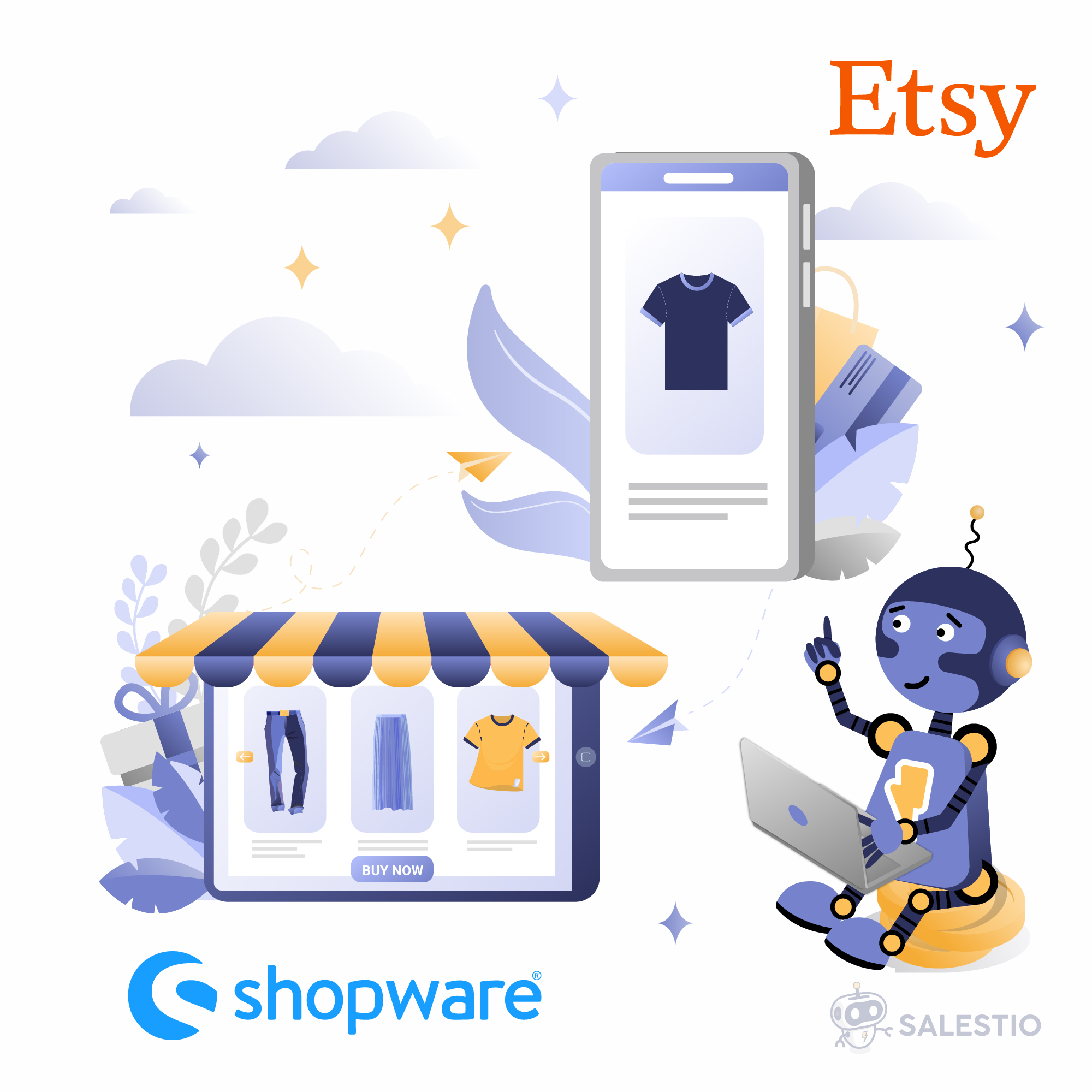26 Jul'24

Product categories and types are fundamental in creating a user-friendly, efficient, and effective online shopping environment that benefits both the seller and the buyer.
Most online stores and marketplaces use product categories, but there can be variations in how extensively and rigidly they implement these categories. Smaller online stores might use fewer, broader categories due to a smaller inventory, but they still rely on categories to enhance user experience and manage their products.
In today’s article, we describe product categories and types for e-commerce platforms and marketplaces, and why they are important in Salestio. We will also go over some issues that are possible when creating listings.
Product categories and types in e-commerce platforms
Different platforms offer different kinds of product groups. Most commonly, you can use categories and product types.
In Shopify, products can also be organized by collections. You can use all of them simultaneously, or just some of them. In BigCommerce, you need to select both your product type and category to save a product.
Let’s see how these groups are different.

Categories
In Shopify, each product can belong to one category at a time. Each category is predefined by Shopify, and there is no option to add a custom one. Selecting a category is optional, and allows configuring different tax rates, using category-specific metafields, and creating automatic collections.
Other platforms like BigCommerce allow customizing your category tree, so your store is organized just right.
Product types
For Shopify stores, same as category, only one product type can be assigned to each item. A product type is a way to create a custom category if you need something in addition to Shopify’s standard categories.
In BigCommerce, product type is just a selection between digital and physical items.
Shopify Collections
Collections are a handy way to keep products in groups by color, season, or any other attribute.
Each product can be added to a collection directly from the product page. You can also create a manual or automated collection in the Products > Collections section in Shopify.
Product categories and types on online marketplaces
The category tree on each platform is defined by the marketplace and follows its rules and regulations. Sellers cannot modify or add new categories. In addition to the standard eBay categories, you can have custom ones if you are using an eBay Store subscription. Your eBay store categories can be customized, although each item still adheres to global item categories on the platform.
Related: eBay Stores, connect to Store Categories in Salestio
Category defines the set of item specifics that you can add to the listing. This includes things like color, season, shape, country, etc.
Sometimes, category trees on the same platform can be different depending on the marketplace. For example, the same category can be called differently on Amazon UK and Amazon US. It can also be completely missing in some countries or added as a subcategory somewhere else.
Some platforms might have a specified set of rules for their categories. For instance, Amazon requires predefined variation options on some items, while eBay can prohibit variations in some categories.
How product categories and types are used in Salestio
Salestio can create new listings on Amazon, eBay, and Etsy for you. To make use of this feature, you need to add a Creation Profile. The mappings in your Creation Profile are rules that set which Shopify collection/category/product type corresponds to which category on the marketplace.
When configuring a mapping, select a Shopify product group in the Condition section, and marketplace settings in the Category section. Here is how it looks in a Creation Profile for the eBay integration:

The details of configuring Creation Profiles for each integration are slightly different. Check out the respective articles for a full guide:
Amazon Creation Profile configuration
Configure eBay listing attributes in the Creation Profiles
Configure Etsy listing attributes in the Creation Profiles
Possible issues related to product categories/types and how to solve them
Category and item specific not found for product, please adjust Creation Profile.
This error indicates that the Creation profile is not configured or not assigned to the Selling List. Make sure that Product Creation is enabled in the Selling List (or eBay profile if you use it as a saved template) and the correct Creation Profile is assigned.
Also, check if the mapping condition (Product Type, Category, and/or Collection) corresponds to the product you are trying to send.
Check the detailed article with the video on how to solve this error.
Sending to Amazon: Missing variation label.
Some product categories on Amazon require the seller to specify certain variations. For example, size is always required as a variation label to list clothing items.
If you encounter this error, navigate to your product page in Shopify to label the variants accordingly:

Sending to eBay: variation not allowed.
A few categories on eBay (like vintage items) do not allow variations, so you might see an error while listing some items:
Variations are not allowed in this categoryIf the item has multiple variants, two options are available:
- Split the item into multiple products with no variants.
- Edit the Creation Profile to select a different category. You can find all of the categories with variation support in eBay documentation.
For items that have a single variation, navigate to your eBay Profile and uncheck “Send the product with variation”.
eBay: The provided condition is invalid for the selected primary category id.
Condition is the state of the item that you select in the Creation Profile mapping (used, like new, etc.)
Some product categories cannot be selected in certain categories. For example, if you are selling an item in the Vintage clothing category, you cannot list it as New. To resolve this error, select the appropriate condition in your Creation Profile mapping.





